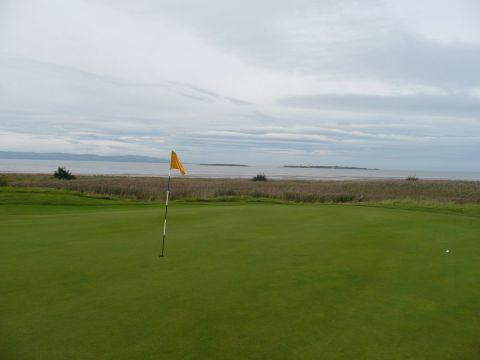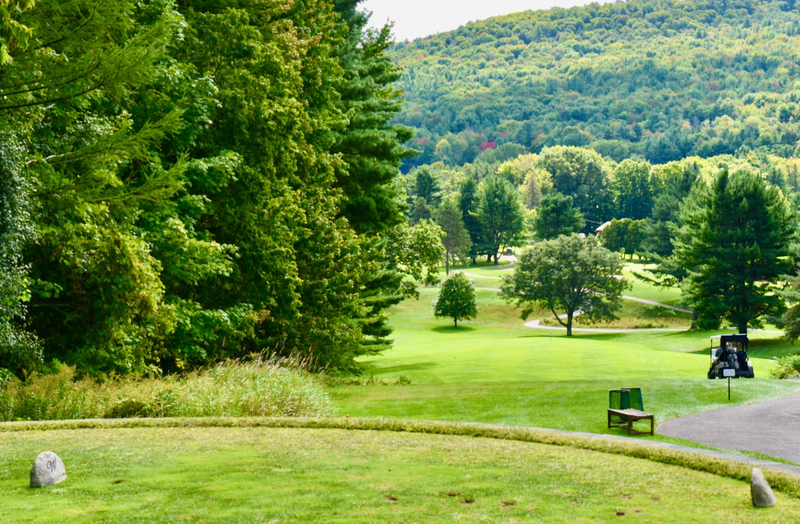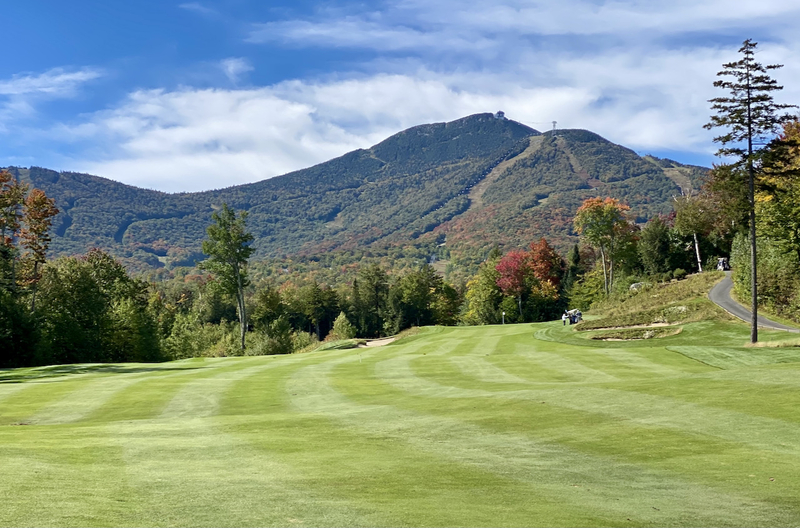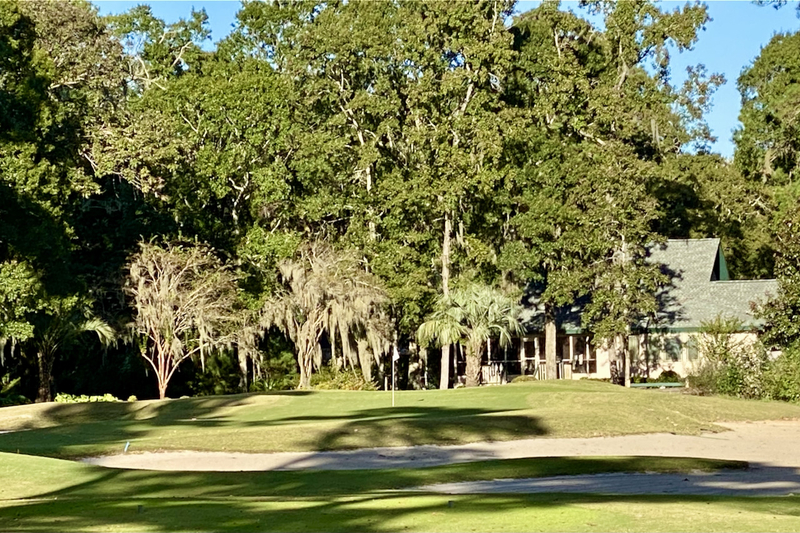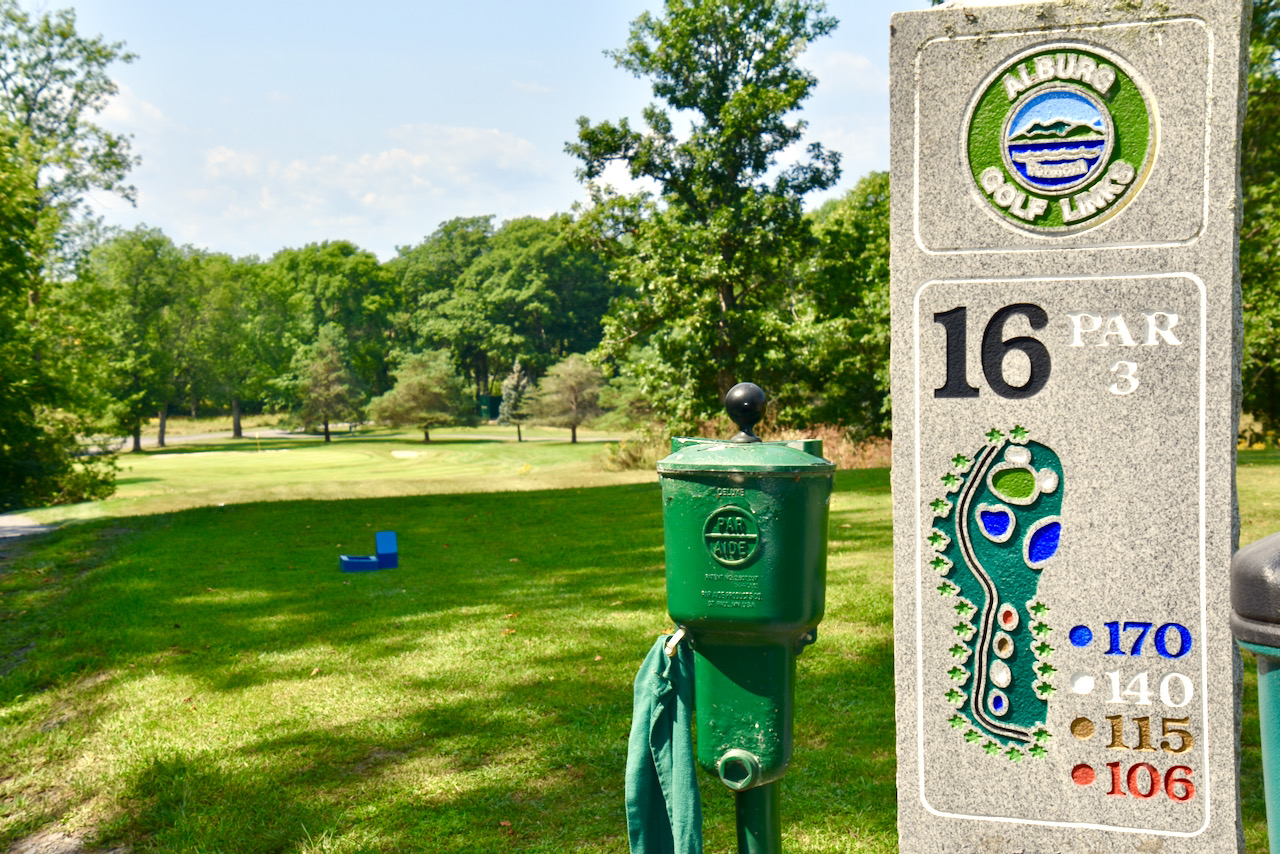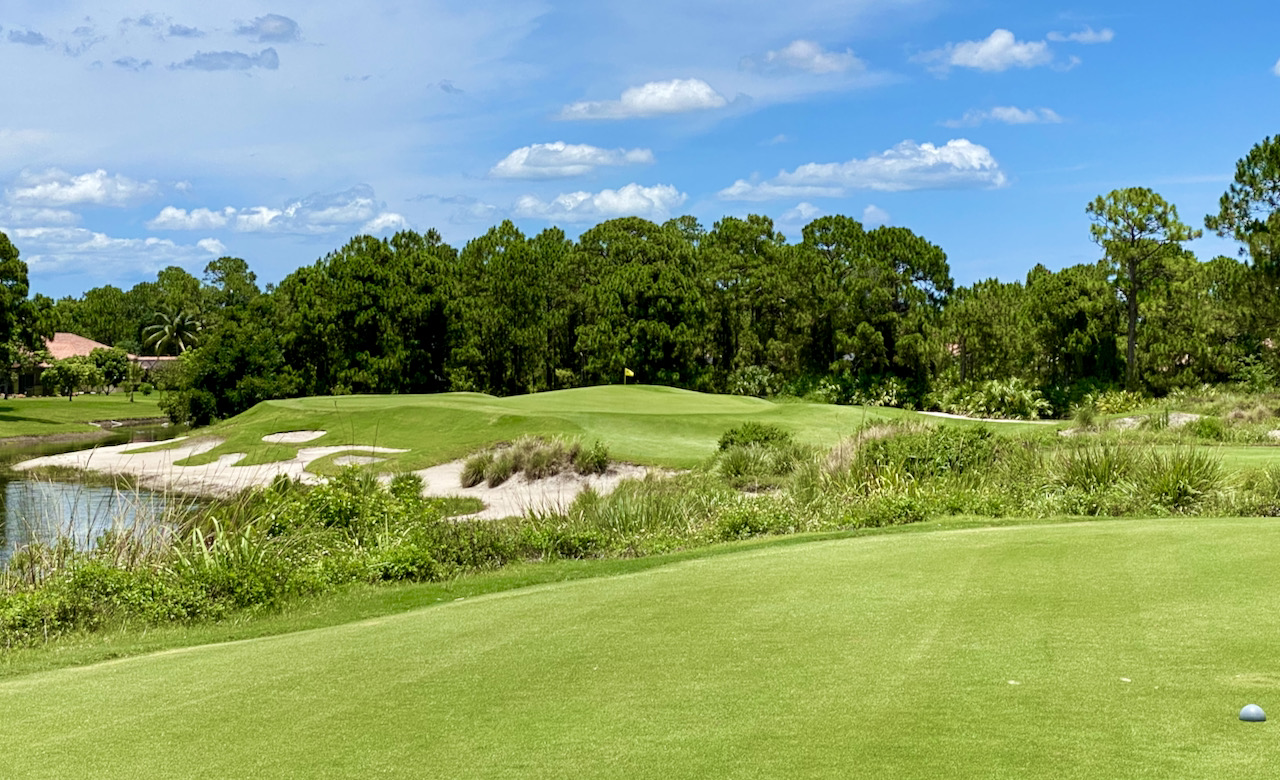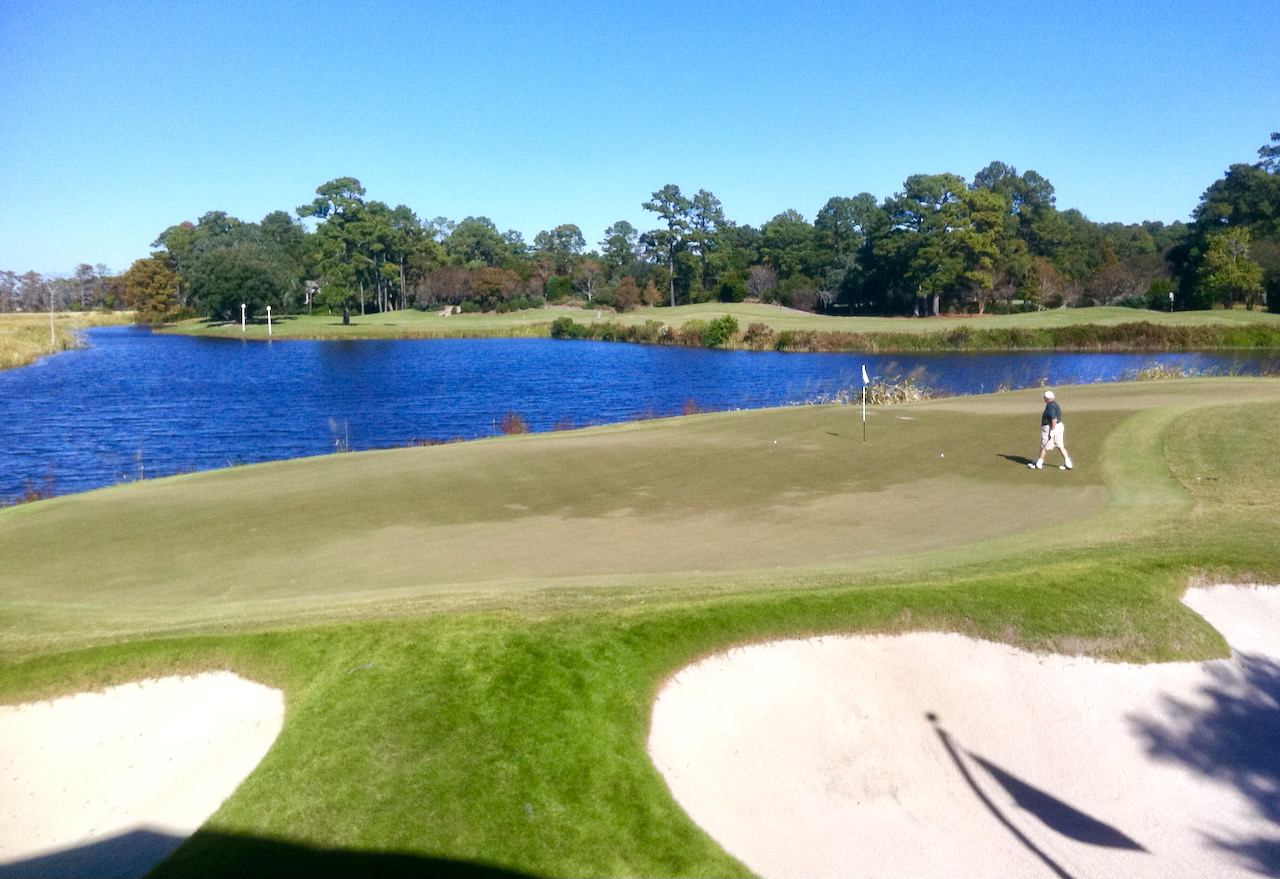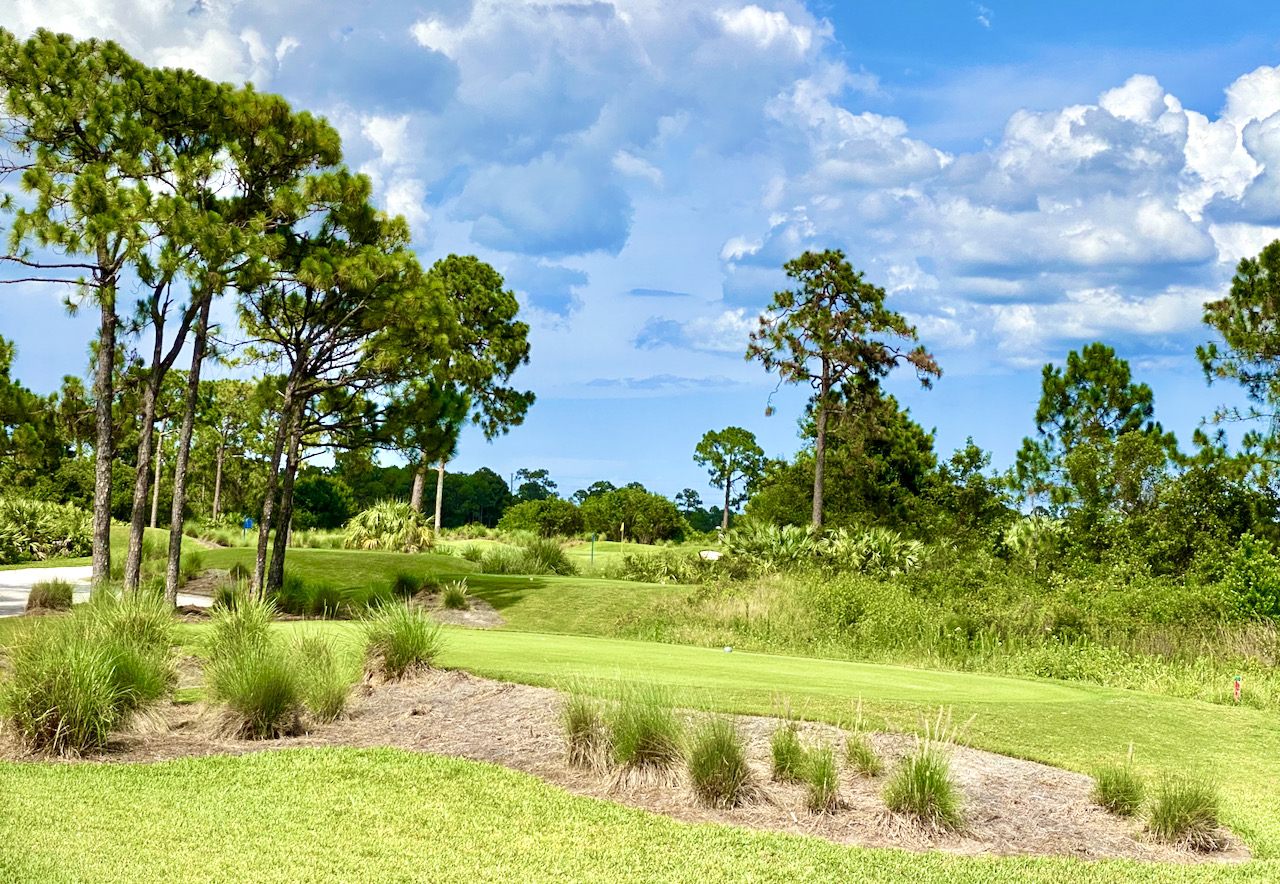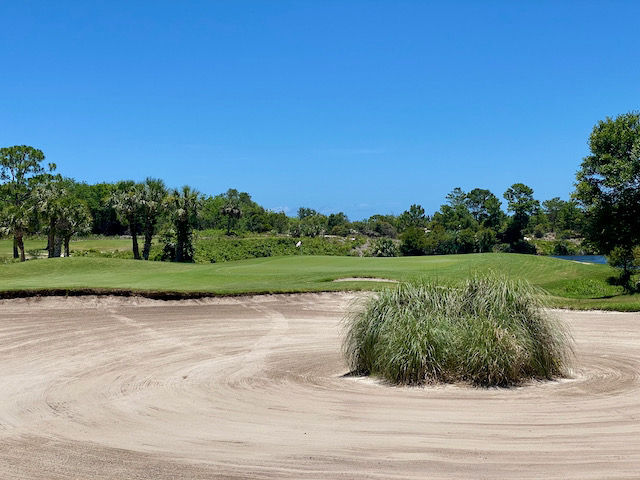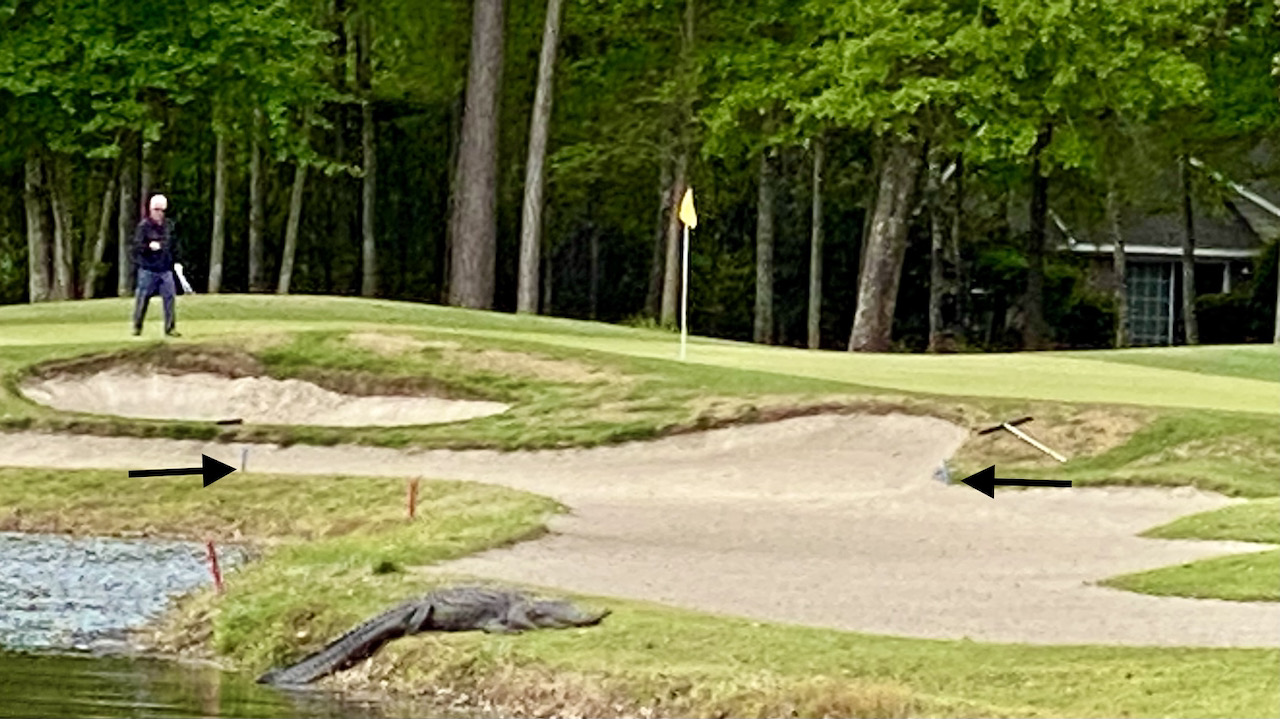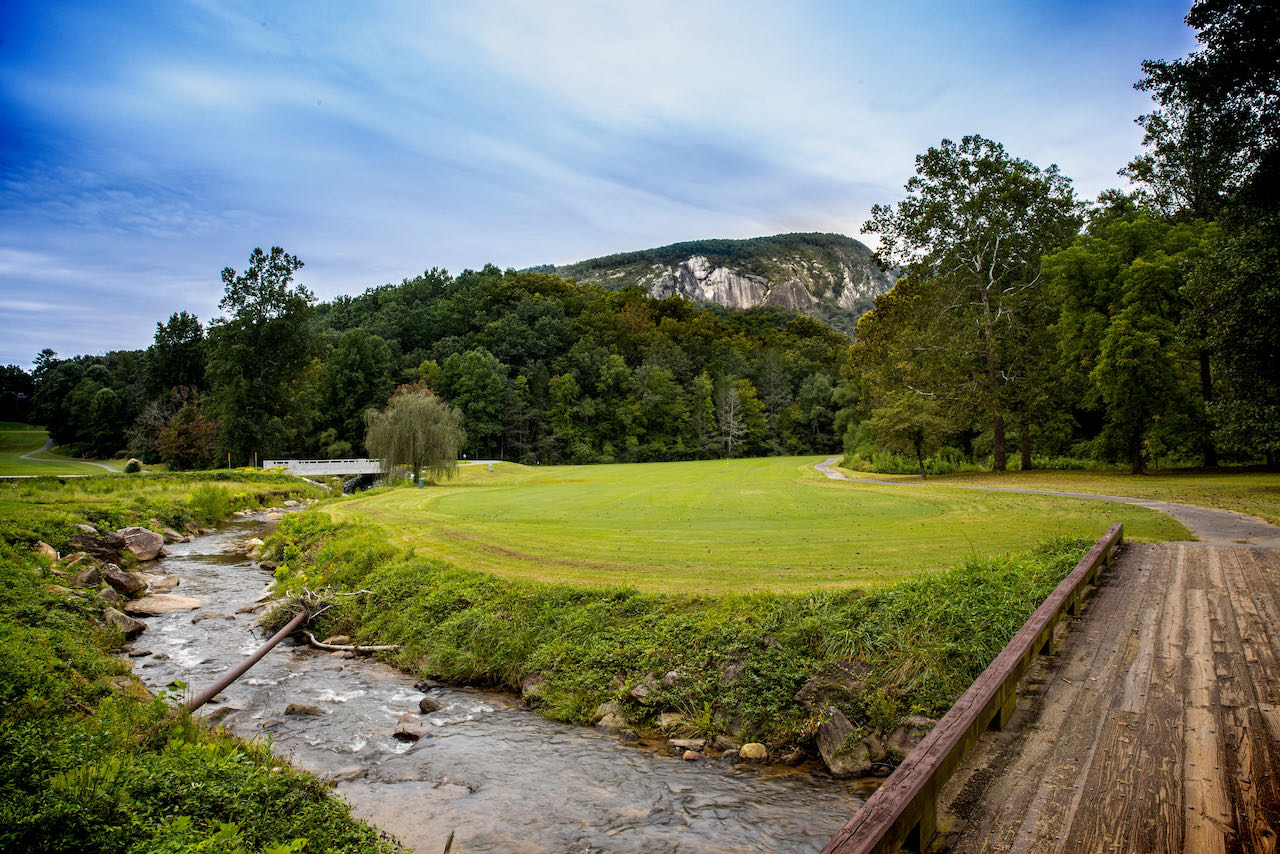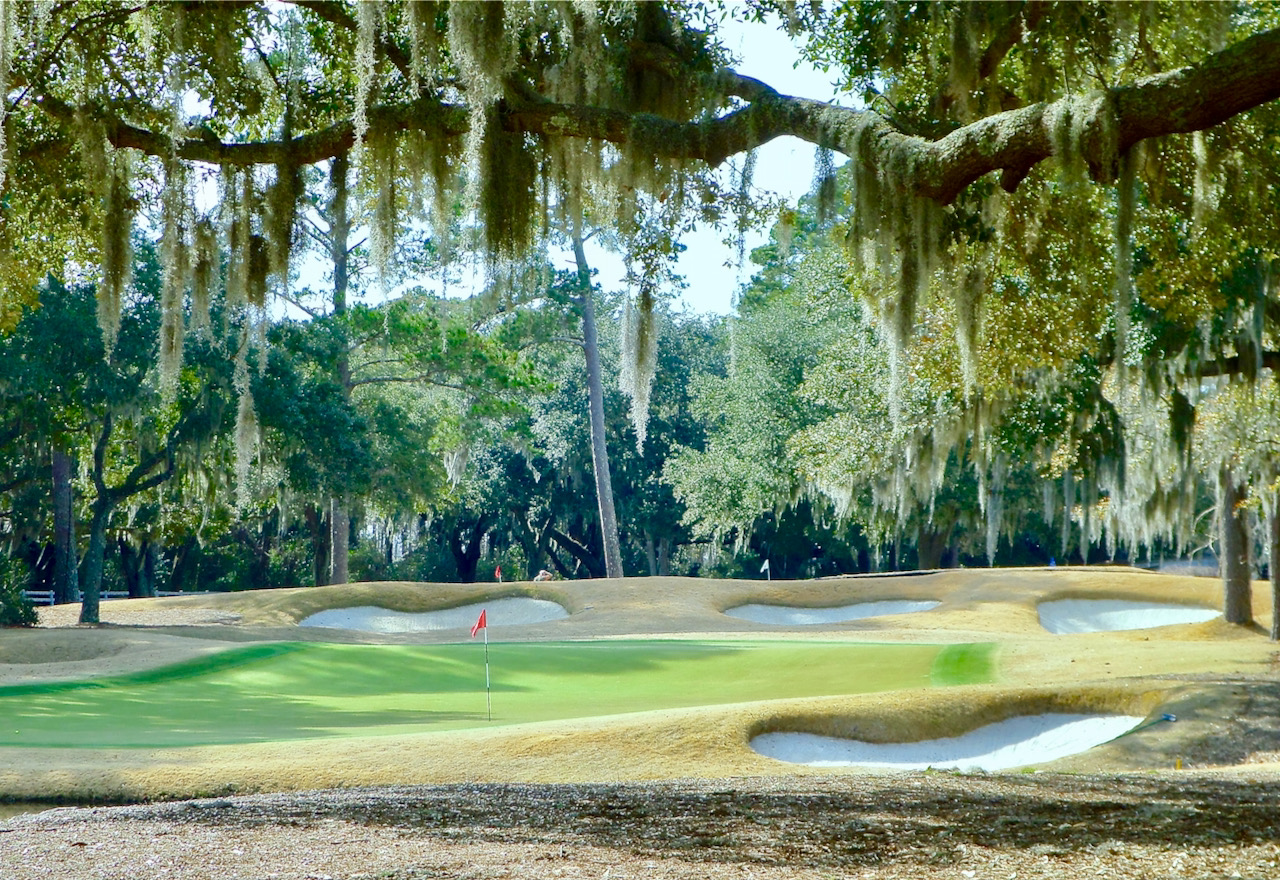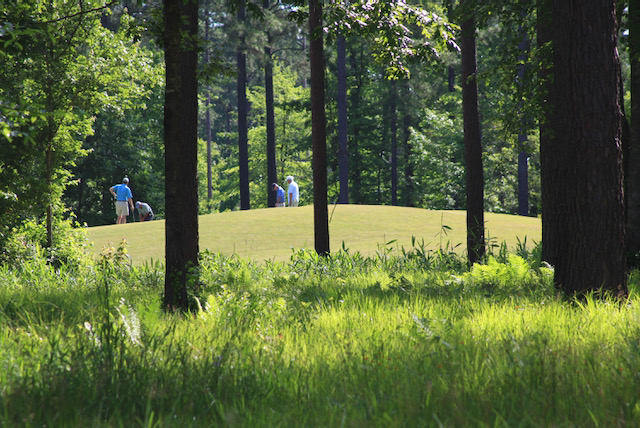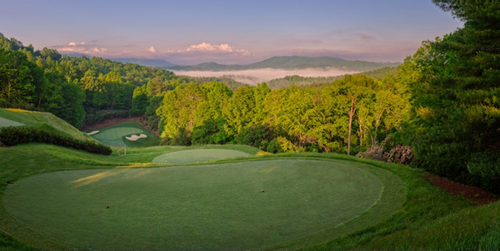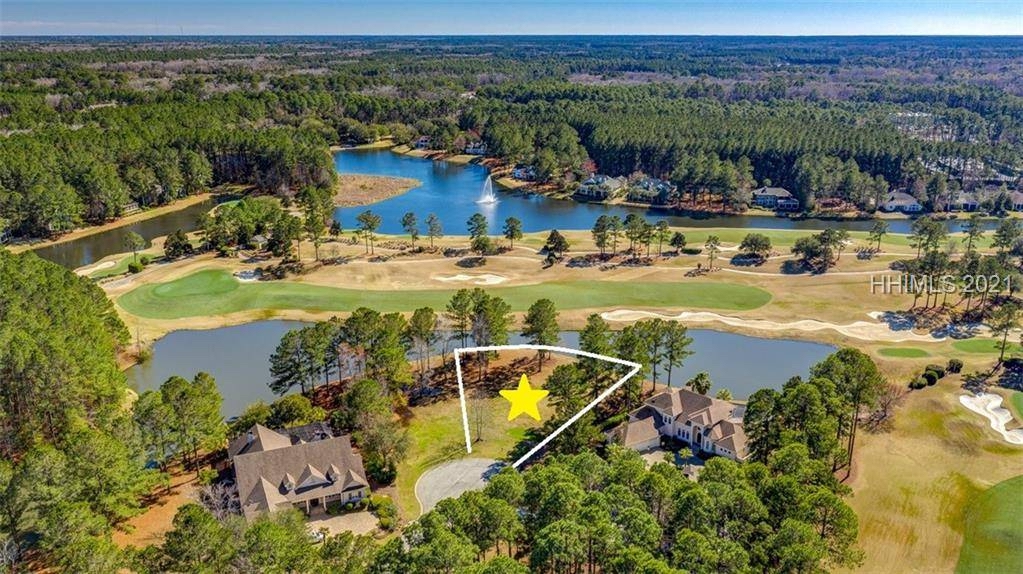by Scott Simpson
This is the third and final part in the series.
As we first approached Southport in the fading light of early evening, we suddenly found ourselves driving through spectacular dunes comparable to the dramatic dunes of Western Ireland (sufficiently distracting that my wife felt compelled to remind me to keep my eyes on the road). These were the Ainsdale Sand Dunes, a National Nature Reserve and home to our three favorite courses of the trip. First amongst this memorable troika is Royal Birkdale, universally and deservedly considered the finest of England's British Open venues. Birkdale is an extremely fair test of golf, with surprisingly flat fairways winding amidst the tall dunes. It has many memorable driving holes, where the player has alternative lines available to avoid the strategically placed fairway bunkers.
Birkdale has some great holes, but perhaps more notably one never senses a weak hole or a compromise in the routing. My personal favorite was probably the 12th, a one-shotter requiring a long iron or hybrid to an elevated plateau green. The green is protected in front by four clearly visible bunkers and, for most of the length of the green, by sandy dunes covered in scrub grass on either side. The green is fairly sized for the length of shot and is actually wider than it appears from the tee, yet the penalties for a crooked shot are quite evident.


Top, the Par 3 12th hole at Royal Birkdale. Below, the view from the front left bunker on the 12th at Birkdale. While not many players will leave a shot this short, the bunkers abutting the front of the green are also no bargain, especially when playing to a back pin.
Birkdale immediately vaults into my Top 10 links courses and warrants only a couple of demerits on its scorecard, the most significant of which is temporary. Birkdale is not particularly close to the water, with the Irish Sea visible from only a couple of the elevated tee boxes. Therefore, the delightful sense of the sea as a constant companion during a round, such as at a Royal Dornoch or Ballybunion, is missing. As for the clubhouse, built in the 1930s and designed to evoke an ocean liner, we’ll consider that an acquired taste.
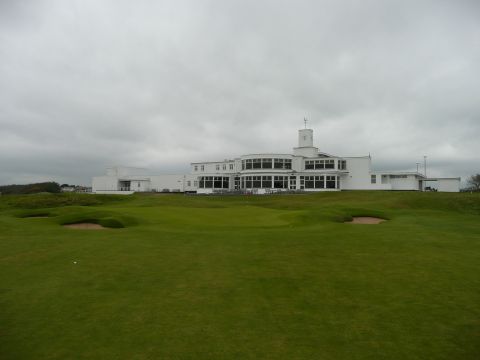
The 18th green and clubhouse at Royal Birkdale, with the author’s ball on the front collar. The hole plays as a par 5 for mortal beings, but as a backbreaking par 4 in the Open Championship. Draw your own conclusions about the clubhouse; I’ll choose to remember the two-putt birdie on the last hole of our trip.
The one significant malady at Birkdale is to be shortly remedied. The 17th hole is a perfectly fine golf hole for most of us, but has evolved over time into a short par 5 that no longer provides a sufficient test for the best players in the world. Accordingly, its green was redesigned to increase the difficulty of the hole in anticipation of the 2008 Open Championship and it provided the signature moment from that competition, Padraig Harrington’s 5-wood that landed short of the green and bounced towards the pin for a kick-in eagle that secured him the title. But as many have noted, the green is just wrong in so many ways, completely out of character with the rest of the golf course and needlessly prone to wacky bounces and unfair putts. We were fortunate to play it to a front pin position that took the worst of the green out of play, though our caddies had us try some putts from the back of the green for a chuckle. Fortunately, the green is to be dug up over the winter and rebuilt in a manner, one presumes, more consistent with the golf course and rational thought.

The notorious 17th green at Royal Birkdale. The camera does not adequately capture the bizarre and unnecessary slopes on the green, and few will mourn its demise.
Birkdale’s neighbors in the Ainsdale Dunes, Hillside Golf Club and Southport & Ainsdale Golf Club, typically shortened to S&A, should not be relegated to anyone’s back seat. Separated only by the local commuter rail line, both of these delightful tracks are routed imaginatively through the dunes. We almost didn’t play Hillside, as the pro shop staff had warned us off because of course maintenance. Fortunately, our caddies at S&A insisted that we shouldn’t be deterred, and we were able to fit in a round. The inbound nine runs through the best of the dunes and may well be the best nine holes of links golf in England.

The 10th green at Hillside Golf Club, the start of an exhilarating stretch of golf. The hole plays into the prevailing wind and the player needs to be wary of the false front.
S&A is almost as pleasant a jaunt, a little shorter and a little tighter than its neighbors. As is often the case in this part of the world, and while largely unknown to U.S. golfers, S&A has its own impressive pedigree, having hosted two Ryder Cups in the 1930s. Its best-known hole is the 16th, a three-shotter called Gumbley’s, where the second shot is played blindly over railroad sleepers, very reminiscent of Prestwick. Your humble correspondent can’t offer an opinion on the merit of this golf hole, as I was unfortunately so out of position off the tee that I blasted a sand wedge over the mound from the dune on the right and ended up with a very crooked number on my scorecard. S&A, like Royal Lytham & St Anne, has a mid-iron par 3 as its opening hole, leading one to conclude that it must have something to do with the ampersands.

The blind carry required on the second shot of the 16th hole at S&A, assuming that, unlike the author, you find the fairway with your drive (taken from across the commuter rail line on the first nine at Hillside Golf Club).
The list of must-plays in the area also includes Formby Golf Club, host of the 2009 British Amateur won by Italian phenom Matteo Manassera (a very nice boy, the club receptionist assured me as she swiped my credit card). Formby is an anomaly, a tree-lined links with a unique circular routing reminiscent of Muirfield. Contained entirely within the grounds is the Formby Women’s Club, a separate entity, which was recommended to us more than once and described as being “5,000 yards long and a yard wide.” We also made it down to Wallasey Golf Club, an historic Liverpool club best known as the club at which the Stableford scoring system originated.
Theresa and I greatly enjoyed our time in Southport, particularly the wealth of great golf on one’s virtual doorstep. Guilty of spreading ourselves too thin and spending far too much time on the road on prior trips, we delighted in the ability to unpack and settle in for such an extended stay in one hotel. The biggest negative in our reckoning is that it’s a densely populated area, with all the attendant inconveniences inherent in civilization, such as the traffic congestion earlier. At one point in the trip, Theresa lamented the absence of sheep on the roads, typically in such abundance in Scotland and Ireland. We joked between ourselves about the difference between Scottish and English traffic jams, the former involving cattle and sheep and the latter related to school buses and construction on the dreaded M25.
I recommend Southport highly to anyone who, like us, has sampled the great Scottish and Irish links, or who take particular pleasure in playing major tournament venues. However, for those contemplating a first trip to experience links golf -- and what are you waiting for? -- Scotland or Ireland will likely provide the more satisfying travel experience.
Editor’s Note: Golf Community Reviews reader Scott Simpson has made repeated visits to the British Isles to play links golf. After a recent trip, I asked him to contribute some thoughts about the glories of golf by the sea and to describe his recent rounds in the Isles. We thank Scott for his illuminating and entertaining articles.






